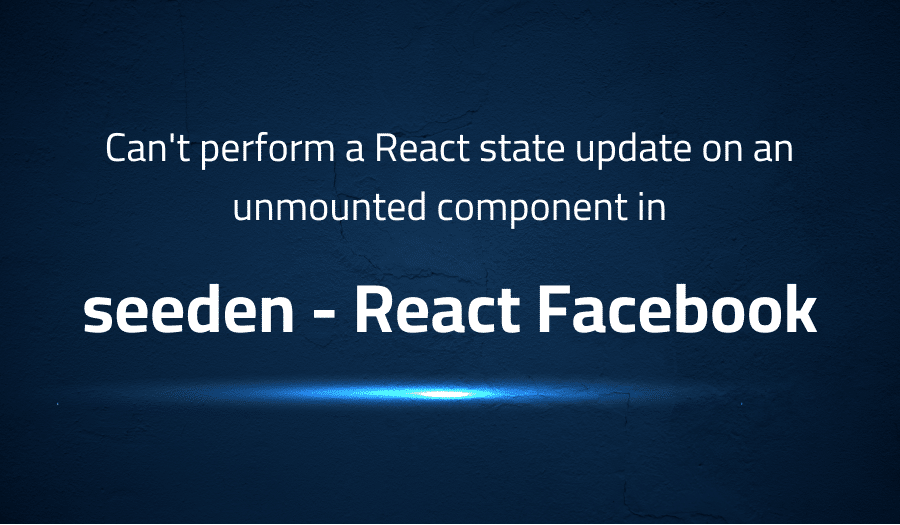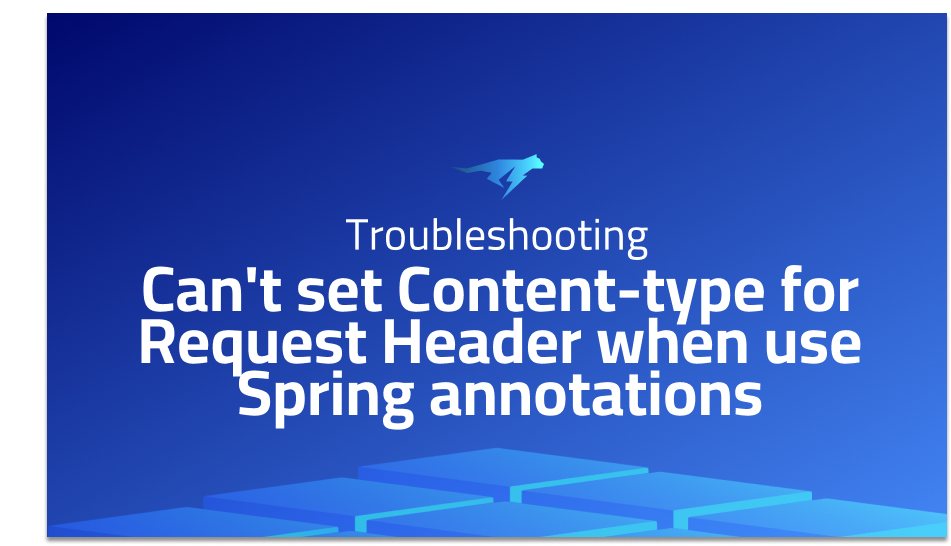

Can’t perform a React state update on an unmounted component in seeden React Facebook
Explanation of the problem
The problem at hand involves the use of the react-facebook library to embed a Facebook page within a website. The developer is encountering the following warning message: “Can’t perform a React state update on an unmounted component. This is a no-op, but it indicates a memory leak in your application. To fix, cancel all subscriptions and asynchronous tasks in the componentWillUnmount method.” This warning is likely being caused by an issue with the component being unmounted before the subscriptions and asynchronous tasks are properly cancelled.
To resolve this issue, the developer should ensure that the componentWillUnmount lifecycle method is being properly utilized to cancel all subscriptions and asynchronous tasks before the component is unmounted. This can be achieved by adding the appropriate code to the componentWillUnmount method within the FanpageFacebook component, as seen in the following code block:
class FanpageFacebook extends React.Component {
componentWillUnmount() {
// Cancel all subscriptions and asynchronous tasks here
}
render() {
return (
<>
<BoxTitle title="Fanpage" showViewMoreButtom={false} />
<div className="bg-white flex p-2.5 mb-2px">
<FacebookProvider
appId="469469066915707"
>
<Page
href="https://www.facebook.com/khotailieumienphi.tk"
tabs="timeline"
/>
</FacebookProvider>
</div>
</>
)
}
}Troubleshooting with the Lightrun Developer Observability Platform
Getting a sense of what’s actually happening inside a live application is a frustrating experience, one that relies mostly on querying and observing whatever logs were written during development.
Lightrun is a Developer Observability Platform, allowing developers to add telemetry to live applications in real-time, on-demand, and right from the IDE.
- Instantly add logs to, set metrics in, and take snapshots of live applications
- Insights delivered straight to your IDE or CLI
- Works where you do: dev, QA, staging, CI/CD, and production
Start for free today
Problem solution for Can’t perform a React state update on an unmounted component in seeden React Facebook
The issue at hand is the error message “Can’t perform a React state update on an unmounted component” in the seeden React Facebook library. This error message occurs when a component is being updated with new state information, but the component has already been unmounted from the page. This can happen if the component is being used in a conditional rendering scenario, where the component is only displayed under certain conditions.
A possible solution for this issue is to use conditional rendering, in which the component is only rendered when the associated object is returned from the server and is not empty. This can be done by using a ternary operator, which checks the condition and only renders the component if the condition is met.
{this.state.song ? <SongComponent song={this.state.song} /> : null}
This solution has been reported to work, but it may not be considered best practice. A better solution would be to use componentDidUpdate lifecycle method in the component to check if the component is still mounted before updating the state.
componentDidUpdate(prevProps, prevState) {
if (this._isMounted) {
this.setState({song: this.props.song});
}
}
It is also important to note that this issue may have been resolved in later version of the seeden React Facebook library, and the developer should check the version they are using and update accordingly.
Other popular problems with React Facebook
Problem: Unmounting components
When a component is unmounted, it is removed from the DOM and any timers or listeners associated with it are also removed. However, if a component has a setState or setProps call in its componentWillUnmount lifecycle method, it can cause an error.
Solution:
To solve this problem, you can add a check inside the componentWillUnmount method to ensure that the component is still mounted before making any setState or setProps calls.
class MyComponent extends React.Component {
componentWillUnmount() {
if (this.isMounted()) {
this.setState({someState: 'new value'});
}
}
...
}
Another solution is to use an library like react-safe-update to handle this issue.
Problem: Reconciling state and props
This can occur when a component’s state and props are modified at the same time, leading to unexpected behavior.
Solution:
To solve this problem, it is recommended to use a single source of truth for the component’s state and props. This can be done by using a state management library like Redux or MobX, which allows you to manage the component’s state in a centralized store.
import { createStore } from 'redux'
const store = createStore(reducer)
class MyComponent extends React.Component {
state = {
count: store.getState()
}
componentDidMount() {
store.subscribe(() => {
this.setState({count: store.getState()})
})
}
...
}
Problem: Re-rendering a component
This can occur when a component’s state or props are updated, causing the component to re-render. However, this can lead to performance issues if the component has a large number of child components or is re-rendering frequently.
Solution:
To solve this problem, you can use the shouldComponentUpdate lifecycle method to optimize the component’s re-rendering behavior. This method allows you to compare the current props and state with the next props and state, and return false if the component does not need to be re-rendered.
class MyComponent extends React.Component {
shouldComponentUpdate(nextProps, nextState) {
if (nextProps.someProp === this.props.someProp && nextState.someState === this.state.someState) {
return false
}
return true
}
...
}
Additionally, you can use React.memo for functional component or PureComponent for class component to optimize re-rendering as well.
A brief introduction to React Facebook
Seen is a popular open-source library for building user interfaces using React and Facebook’s Graph API. It allows developers to easily create components for displaying and interacting with data from the Facebook platform, such as user profiles, posts, and pages. Seen leverages the power of React’s component-based architecture to provide a flexible and reusable solution for building Facebook-powered applications.
One of the key features of Seen is its support for the Graph API. The Graph API is a powerful tool for querying and modifying data on the Facebook platform. Seen provides a simple and intuitive API for working with the Graph API, allowing developers to easily retrieve and update data on the platform. This allows developers to quickly create dynamic and responsive user interfaces that are powered by real-time data from Facebook. Additionally, Seen also provides a set of pre-built components that can be used to quickly and easily create common Facebook-powered features such as user profiles and post feeds. This allows developers to focus on building the unique functionality of their application, rather than spending time on building common functionality.
Most popular use cases for React Facebook
- Building social media-powered applications: Seen can be used to easily create applications that are powered by data from the Facebook platform. This can include features such as user profiles, posts, pages, and friend lists. Seen’s support for the Graph API allows developers to easily retrieve and update data on the platform, allowing them to quickly create dynamic and responsive user interfaces.
import { useGraph } from 'seen'
const UserProfile = () => {
const { loading, error, data } = useGraph('/me')
if (loading) return <p>Loading...</p>
if (error) return <p>Error: {error.message}</p>
return (
<div>
<img src={data.picture.url} alt={data.name}/>
<h2>{data.name}</h2>
<p>{data.bio}</p>
</div>
)
}
- Building interactive and responsive applications: Seen allows developers to easily create responsive and interactive user interfaces by leveraging the power of React. This can include features such as real-time data updates and dynamic UI elements that respond to user input.
- Building reusable components: Seen provides a set of pre-built components that can be used to quickly and easily create common Facebook-powered features such as user profiles and post feeds. This allows developers to focus on building the unique functionality of their application and reuse pre-built components, rather than spending time on building common functionality. This can help to increase the efficiency and maintainability of the application.
It’s Really not that Complicated.
You can actually understand what’s going on inside your live applications.




